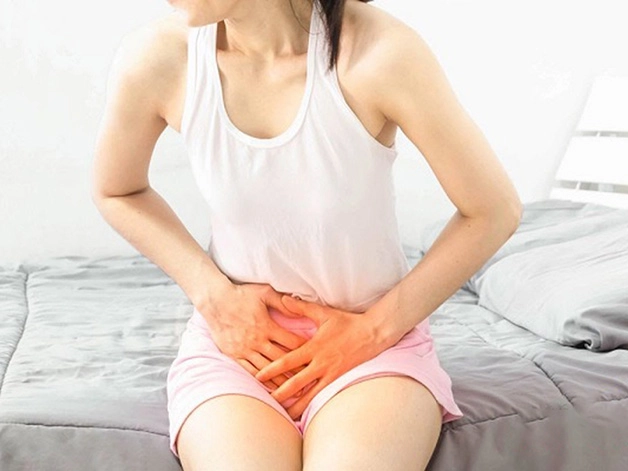Recognizing the Subtle Signs
One of the biggest challenges for women with non-classic CAH is that symptoms often resemble more common conditions such as polycystic ovary syndrome (PCOS). Shared features include:
-
Irregular or absent menstrual cycles
-
Unwanted facial or body hair growth
-
Persistent acne
-
Difficulties with fertility
Because of this overlap, women may spend years searching for answers, sometimes facing frustration, confusion, and even self-blame. Early detection through hormone testing and genetic analysis is vital to prevent unnecessary delays in diagnosis and care.
The Importance of Early Diagnosis
Identifying CAH early benefits women in more ways than one:
-
Empowered reproductive choices: Women can plan pregnancies with greater confidence, knowing how CAH may influence fertility.
-
Personalized treatment: Tailored hormone therapy helps regulate cycles and reduce symptoms that can otherwise affect daily life.
-
Emotional clarity: Having a name for the condition often brings relief, ending the uncertainty and anxiety of unexplained symptoms.
-
Prevention of complications: Regular monitoring can reduce the risk of bone loss, metabolic problems, and emotional strain linked to unmanaged hormone imbalance.
The Emotional and Social Impact of CAH
Living with CAH involves far more than managing hormone levels. Many women face emotional challenges tied to their symptoms and treatment:
-
Body image and self-esteem: Excess hair growth, acne, or weight fluctuations from long-term corticosteroid therapy can impact confidence and self-image.
-
Relationships: Concerns about fertility or physical changes may create stress in intimate relationships.
-
Mental health: The unpredictability of symptoms and lifelong treatment needs can contribute to anxiety, depression, or stress.
Addressing these issues requires a holistic approach that includes not only endocrinology but also psychological support and community connections. Support groups, therapy, and open conversations about CAH can help women feel less isolated and more empowered.
Fertility and Pregnancy Planning
For many women, fertility is one of the most pressing concerns with CAH. Excess androgens can disrupt ovulation, making it harder to conceive naturally. However, with appropriate hormone therapy and medical guidance, many women are able to achieve pregnancy.
Key considerations include:
-
Preconception counseling: Specialized care helps women prepare for safe conception.
-
Medication adjustments: Corticosteroid dosages may need to be tailored before and during pregnancy.
-
Prenatal care: Close monitoring reduces risks for both mother and baby, ensuring healthier outcomes.
Women with CAH are encouraged to work closely with both endocrinologists and obstetricians who are familiar with the condition to ensure comprehensive care throughout the fertility journey.
Advances in Treatment and Care
The cornerstone of CAH management remains corticosteroid replacement therapy, which helps restore hormonal balance and reduce androgen levels. Newer innovations, such as modified-release steroids, better mimic the body’s natural hormone cycles, reducing side effects and improving quality of life.
Research into gene therapy offers hope for more permanent solutions, while ongoing studies of alternative treatment strategies may expand future options. Alongside medical care, lifestyle measures—balanced nutrition, weight management, stress reduction, and regular exercise—play a critical role in improving overall well-being.
Long-Term Challenges and Monitoring
Because CAH is a lifelong condition, ongoing monitoring is essential. Women may face challenges such as:
-
Bone health risks from long-term steroid use (osteoporosis).
-
Metabolic issues like insulin resistance or changes in body weight.
-
Mood changes and fatigue linked to fluctuating hormones or treatment side effects.
Routine check-ups, hormone monitoring, and bone density assessments allow doctors to intervene early. Emotional well-being should also be monitored, with mental health care integrated into routine CAH management.
Thriving with CAH: Best Practices
Living well with CAH is absolutely possible when women take an active role in their care. Best practices include:
-
Building a multidisciplinary care team with endocrinologists, gynecologists, mental health professionals, and nutritionists.
-
Maintaining a consistent follow-up schedule for hormone checks and bone health evaluations.
-
Focusing on emotional health through therapy, support groups, and mindfulness practices.
-
Adopting a healthy lifestyle, with regular exercise, balanced meals, and adequate rest to improve energy and resilience.
-
Staying informed about new treatment advances and research to take advantage of evolving care options.
Conclusion
For women, congenital adrenal hyperplasia is more than just a hormonal disorder—it shapes experiences of health, fertility, and identity. While the journey may involve challenges, early diagnosis, personalized treatment, and strong support systems empower women to live full, confident lives.
By combining medical management with emotional care, women with CAH can overcome obstacles, achieve reproductive goals, and maintain long-term wellness. With ongoing advances in research and treatment, the outlook for women with CAH continues to improve, making it possible not just to manage the condition but to truly thrive.

